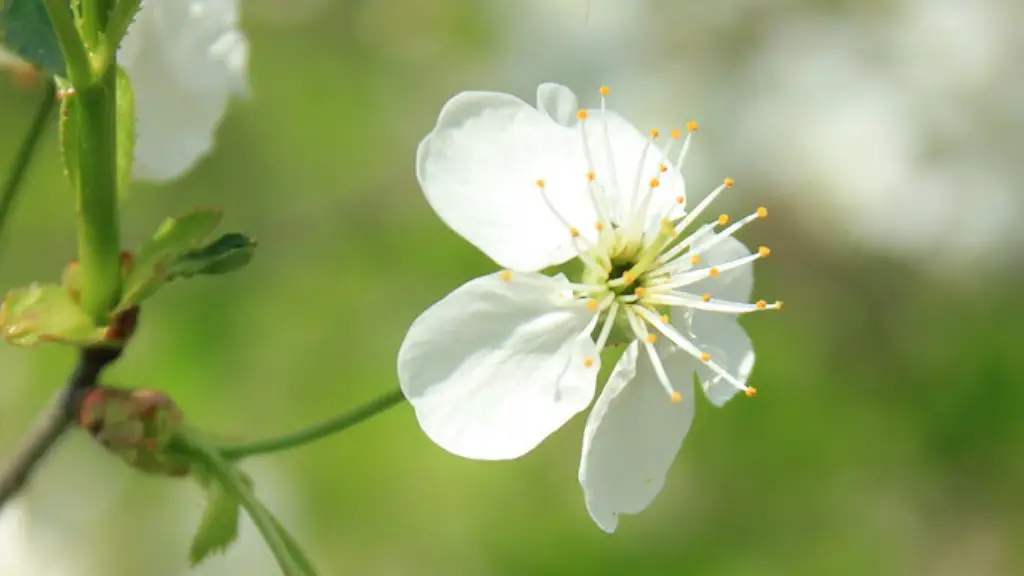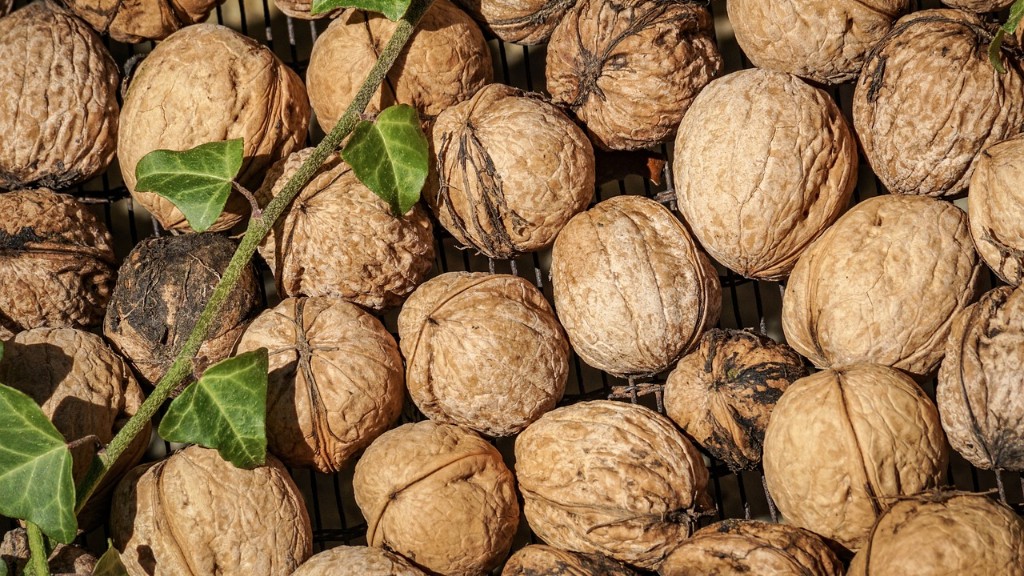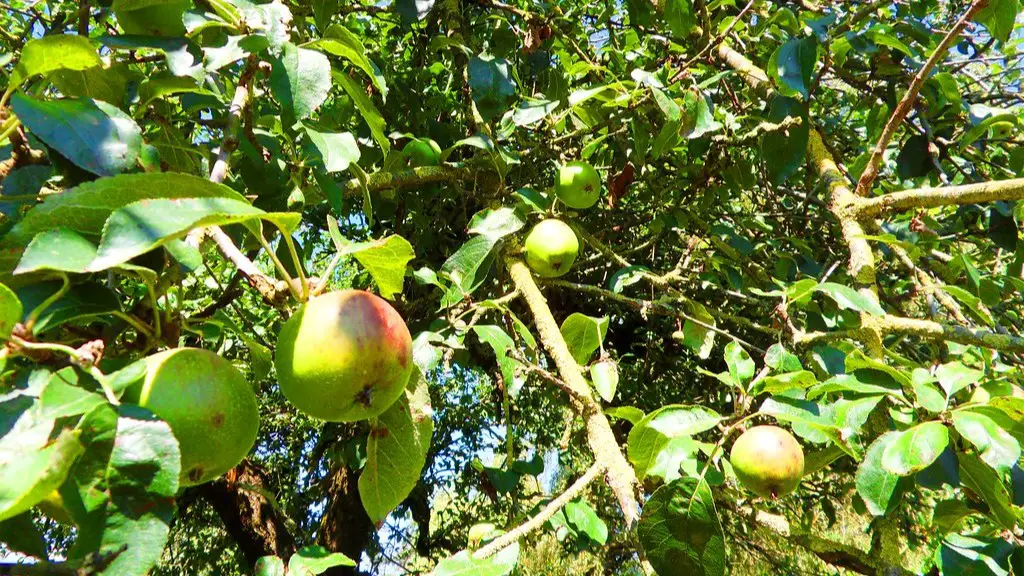Apple trees are not only a beautiful addition to any home, but they can provide delicious, healthy fruit for you and your family to enjoy. If you’re thinking about planting an apple tree at home, there are a few things you need to know first. Here’s a quick guide on how to plant an apple tree at home, so you can enjoy fresh apples for years to come.
To plant an apple tree at home, first choose a sunny spot in your yard with well-drained soil. Dig a hole that is twice as wide and just as deep as the tree’s root ball. Gently remove the tree from its container, being careful not to damage the roots, and set it in the hole. Backfill the hole with soil, being sure to press down lightly as you go to remove any air pockets. Water the tree deeply and regularly for the first few months. After that, water only when the ground is dry.
What is the best way to plant an apple tree?
When planting an apple tree, it is important to dig a hole that is twice the diameter of the root system and 2 feet deep. This will give the roots plenty of room to grow and establish themselves. Once the hole is dug, some of the loose soil should be placed back into the hole. The sides of the planting hole should also be loosened so that the roots can easily spread out.
If you’re looking to plant an apple tree, spring is the best time to do it in most parts of the country. The exact month will depend on your location, but March and April are ideal for most growers. If you live in a warmer climate (USDA zones seven and warmer), it’s also possible to start planting in the fall.
Can I plant my own apple tree
You can plant apples anytime from spring to fall. As is the case with most trees and shrubs, dig a hole that’s twice as wide as (but no deeper than) the pot your apple tree comes in. Carefully remove the tree from the pot, loosen its root ball, and spread the roots so they face outward.
To plant a seed, make a small hole in the soil with your fingertip or the tip of a pencil, drop the seed in and cover it with soil, then water thoroughly. Keep the soil slightly moist, and when leaves begin to emerge, transfer the pots to a sunny window. Plant the strongest seedlings in the ground when they are a few inches tall.
Do you need 2 apple trees to produce fruit?
Apples are self-unfruitful, which means that they need to be pollinated by another apple variety in order to produce fruit. Plant at least two different apple tree varieties within 50 feet of one another for a good fruit set. Some apple varieties, such as Golden Delicious, will produce a crop without cross-pollination from a second variety.
Before planting an apple tree, it is important to soak the roots in water for one to two hours. This will help keep the roots from drying out while you are digging the planting hole. However, you should avoid soaking the roots for more than six hours. Additionally, remember not to expose the roots to freezing temperatures prior to planting.
Do apple trees come back every year?
The cause of this phenomenon is unknown, but it seems to be related to the apple tree’s natural cycle of growing and resting. It’s possible that the trees are responding to environmental cues, such as changes in temperature or rainfall. Whatever the cause, it’s clear that these trees have a unique pattern of fruit production that sets them apart from other trees.
The average bearing age of fruit trees varies depending on the type of fruit tree. For example, apple trees have an average bearing age of 4 to 5 years, while sour or tart cherry trees have an average bearing age of 3 to 5 years. Pear trees have an average bearing age of 4 to 6 years, and plum trees have an average bearing age of 3 to 5 years.
How often should you water an apple tree after planting
It is important to water your new plants regularly, especially during the first few weeks after planting. Water them at planting time, and then again 1-2 weeks later. After that, water them every 2-3 days for 3-12 weeks. After that, water them weekly until their roots are established.
When growing apple trees, it is important to be aware of the many potential problems that can occur. Homegrown apples can be wormy, bitter and unappealing if not properly cared for. Apple trees are also a sensitive bunch, often falling victim to pests and diseases. Therefore, it is important to be vigilant in order to ensure a successful harvest.
What is the easiest apple tree to grow?
The Fuji apple is the most popular eating apple in America and an excellent choice for a backyard apple tree! These easy to grow trees produce sizeable fruit and are sweet and juicy with a crisp bite. Although Fuji apples brown easily, they have a long shelf life compared to other varieties.
Apple trees need well-drained, loose soil to grow and thrive. preparing the soil correctly before planting is essential for the tree’s health and productivity.
To prepare the soil, first dig a hole that is three times the width of the pot and just as deep as the root ball. The dirt that is taken out of the hole should be mixed 50/50 with aged mushroom compost, rotten pine bark, aged manure or compost. This will create a loose, well-drained soil that the tree can roots can easily grow in.
Once the hole is prepared, the tree can be planted and watered thoroughly. Mulch around the tree to help keep the soil moist and cool.
Can you grow apple trees from store bought apples
It is possible to grow an apple tree from the seeds inside the fruit you bought on your last grocery run. However, it is not as simple as just scattering them across the ground in your yard. The seeds need to be properly cared for in order to germinate and grow into a healthy tree. With the right care and patience, you can grow your own apple tree from seed.
Apple trees can take a long time to grow from seed. It can be anywhere from 7 to 10 years before you’re able to tell if your tree will have good fruit. In the meantime, make sure to take care of your tree and give it the best chance to grow strong and healthy.
Can you grow a tree from an apple stem?
It’s not possible to make a cutting from your friend’s apple tree and have it form roots so that you can plant it. However, it is possible to graft that stem, or buds from that stem, onto another apple tree to have a tree that produces, or at least one branch, that produces the same fruit as your friend’s tree.
Lots of trees are hermaphroditic, meaning their flowers contain both male and female reproductive parts. Other species have male trees and female trees, which can be told apart by looking at their flowers. Male reproductive parts are the pollen-laden stamen, while female parts are the egg-holding pistils.
Warp Up
Assuming you would like tips for planting an apple tree:
It is best to plant your apple tree in early spring, before the leaves start to bud. Choose a sunny spot in your yard that has well-drained soil. Avoid planting the tree too close to other trees or buildings.
Dig a hole that is twice as wide as the tree’s root ball and just as deep. Gently remove the tree from its container and loosen any roots that are tightly bound. Place the tree in the hole so that the roots are spread out evenly.
Backfill the hole with soil, packing it firmly around the roots. Be sure to leave a small basin around the tree so that you can water it more easily. Finish by spreading 2-3 inches of mulch around the tree, being careful not to mound it up against the trunk.
Here are some tips on how to plant an apple tree at home:
1. Choose a sunny spot in your yard for the tree.
2. Dig a hole that is twice the width of the tree’s root ball.
3. Place the tree in the hole and backfill with soil.
4. Water the tree well.
5. Fertilize the tree according to the package directions.
By following these simple tips, you can easily plant an apple tree in your own yard.




